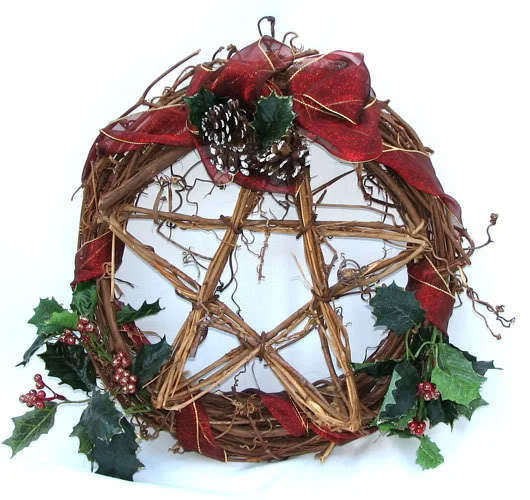While the Companions of Saint Nicholas are still rather popular in many countries and populations, the traditions that pre-date Christmas, that were arguably the predecessors of Christmas, have mostly faded from memory, only being invoked in fiction and in small, neopagan groups. I am referring to the celebration of Yule, a festival that goes back to the Germanic peoples of Europe, before Christianity was even a fledgeling religion.
Yule, also known as Yuletide, was a twelve day festival that corresponded with the winter solstice, also known as midwinter night. If that period of time has you singing carols to yourself, you are definitely not alone. Yule and Yuletide are still used in classic songs to refer to Christmas, but seldom outside of that context. The celebration of Yule involved days of feasting, drinking, fornication, and animal sacrifice.
But why was Yule important?
To the Germanic peoples, the period of Yule was a direct worship of their gods. The gods themselves were often referred to as Yule beings, and Odin, father of the Norse gods, had a name that translates to Yule father. It is clear that this celebration of Yule was one of the most direct and important celebrations of the gods throughout the entire year. The true horror comes with these gods, with Odin in particular, as Yule was a time most often associated with the Wild Hunt.
Like many tales from folklore, the Wild Hunt varies based on who is telling it, and what part of Europe - or even across the world - you are from. Traditionally, the WIld Hunt is a procession of spectral huntsmen that streak across the sky, their ghostly steeds, hounds, and birds travelling with them. The hunting party can vary, however. Some tales claim that the group is made of fairies, others elves, though most settle on the idea of demons and devilish beings.
The leader of the party changes based on location, as well. For the vast majority of tales, the Hunt is led by Odin, frequently referred to as Wodan. However, local notable figures, usually disgraced, can be found at the helm in different regions. Some claim the Devil himself leads the Hunt, while others state that some goddesses, or the evil, corrupted forms of them, will charge at the front of the ghastly march. Even Knecht Ruprecht, one of the Companions of Saint Nicholas, has been rumoured to be at the head of the pack.
The Wild Hunt, while present throughout many cultures, really became popular after Jacob Grimm wrote about it in his work, Deutsche Mythologie, in 1835. Grimm agrees that the Wild Hunt is pre-Christian in origin. He writes that the procession was not always a thing of horror. Depending on the individuals in the Hunt, their speed, and the noises they made, the Hunt could either signify good or bad events to come. During the Christianization of Europe, however, the WIld Hunt became monstrous, terrifying. It was associated with the undead walking the countryside, people dying on a mass scale, often in awful ways. Odin, the Yule father, became a fallen idol, losing all familiar features, social standing, and becoming a sort of devil. This helped the Christian Churches demonize the worship of the old gods, further securing their hold. There have been other reasons that Odin has been said to lead the WIld Hunt. In parts of Sweden, for example, Odin wasn’t even seen as a god at all. He was thought to be some kind of nobility who had decided to hunt during Sundays, the Christian day of rest. As his punishment, he has been doomed to hunt down and kill supernatural beings until the end of time.
As you can see, the folklore behind the Wild Hunt is widely varied. Most stories these days tell of a Wild Hunt that is an evil portent, a sign of terrible things to come. At worst, the Wild Hunt is a precursor to war or plague. At best, it means that whoever saw it is going to die. But there are still those who believe that the WIld Hunt can carry other omens. And those the practice neopaganism, like Heathenry, interpret the Wild Hunt in a completely different way.
Neopagan is an umbrella term for a variety of beliefs that are more or less based on the the polytheistic views of Germanic and Norse religions. They are far more complex than that, but it gives the general idea for a foundation. One of the ways in which neopagans celebrate the Wild Hunt is by walking a route through the forest during the day, and then racing through the same circuit at night. If you can navigate it in time, you will be seen as having gained the trust of the wood spirits, and can cut down wood for their own use. To add to the chasm-sized difference between this and the classic version of the WIld Hunt, this modern version is celebrated on Halloween, not around Yule.
It is interesting to see how traditions and tales change over time, how polytheistic rituals can turn into runs, how sacrifices can turn into gift exchanges. Times that we normally associate with well wishes and kindness were, not so long ago, reason to fear specters and fallen gods. If it were up to me, I will stick with offering milk and cookies, giving gifts, and hoping that the figures I see in the sky are Santa and his reindeer, not Odin and his huntspeople.



